Wyoming ROCKS! Water Science Box!
In celebration of Earth Science Week, the University of Wyoming Geological Museum, State of Wyoming Geological Survey, and Science Kitchen are putting together at-home science boxes contain activities connected to this year’s Earth Science Week theme: Water Today and for the Future.
Looking for information about the Teacher Toolkits mentioned in the WPR story? Click here for more info!
Groundwater Movement Activity
Wyoming’s iconic rock formations Game
Groundwater Movement
Activity Source:
Adapted from “Groundwater Movement” by the U.S. Bureau of Land Management, https://www.earthsciweek.org/classroom-activities/groundwater-movement
Background:
Water that accumulates beneath the surface of the earth is called groundwater. Contrary to popular belief, groundwater does not form underground “rivers,” but is actually found in the small spaces and cracks between rocks and other material such as sand and gravel. Groundwater supplied about 48 percent of the water used for agriculture in the United States in 2015, according to the U.S. Geological Survey. The layer of earth, gravel, or porous stone that yields water is called an aquifer. If hazardous waste, chemicals, heavy metals, or oil collect on the surface of the ground, rain or runoff percolating into the soil can carry these substances into the groundwater. The following activity involves learning how water moves through rock materials such as sand, gravel, and clay.
Materials provided in your Science Box:
· 3 5.5 ounce plastic cups with lids
· Equal amounts of gravel, sand, and bentonite (a type of clay)
· What you will need from home: water
Procedure:
1. Predict how water will move through gravel, sand, and bentonite. Which type of material will allow water to pass through it most quickly?
2. Test your hypothesis by filling the three plastic cups to the same level with earth materials—gravel in the first, sand in the second, and clay in the third. There should be equal amounts of material in each cup.
3. Look closely at each cup with the naked eye. Do you want to adjust your hypothesis after looking at the materials?
4. To demonstrate how groundwater moves through underground rock formations, pour equal amounts of water into each cup. Record your results and discuss them as a family. Which container emptied the fastest? Which emptied the slowest? How do the different materials influence water movement in natural systems?
The UW Geological Museum included an activity called the “Wyoming Rock Matching Game”
The purpose of this matching game is ultimately to show that Wyoming has looked very different in the past and that different water features in these past environments formed many of the common rocks that we find in Wyoming today.
This activity is aimed at 3rd grade, but for younger aged participants, and even for 3rd grade, we suggest guardian involvement to help with cutting and explaining some difficult concepts or words.
In this activity participants are provided the following materials in their kit:

You will need scissors to cut out cards.
Follow the below steps to complete the Wyoming Rock Matching Game:
1. Take all the materials out of the bag (leave the envelope alone)
2. Unfold the matching Wyoming rock Matching Game activity sheet
3. Using Scissors, cut out all 10 of the cards on the half sheet. There should be five cards outlined in green and five cards outlined in purple
4. Take the rocks out of the bag
5. The Wyoming Rock Matching Game sheet, read the direction.
a. Your goal is to use the clues in each formation square to match the rock from that formation, what the formation looks like from a road, and match what type of environment likely formed that rock
b. Hint: look for specific colors for each rock type, as well as if one can see individual grains or not.
6. Once you think you’ve got a rock, a green Formation card, and a purple environment card correctly matched with a Rock Formation, open the ‘Answer Key’ envelope to see if you got it correct. Or click to see the Answer Key here!
7. If you didn’t get it correct, try again, or use the answer key to figure out what goes where.
a. It might take a couple for tries
We hope you enjoyed the activity and hope that you might be able to identify some of these famous Wyoming Rock formations and the environment they formed in on your next trip across the state!
Build a Water Filter Activity
STEMonstrations: Water Filtration
Water filtration plays a key part in crew survival aboard the International Space Station. Expedition 55/56 Commander Drew Feustel discusses the water recovery system used to recycle crew waste water for consumption.




